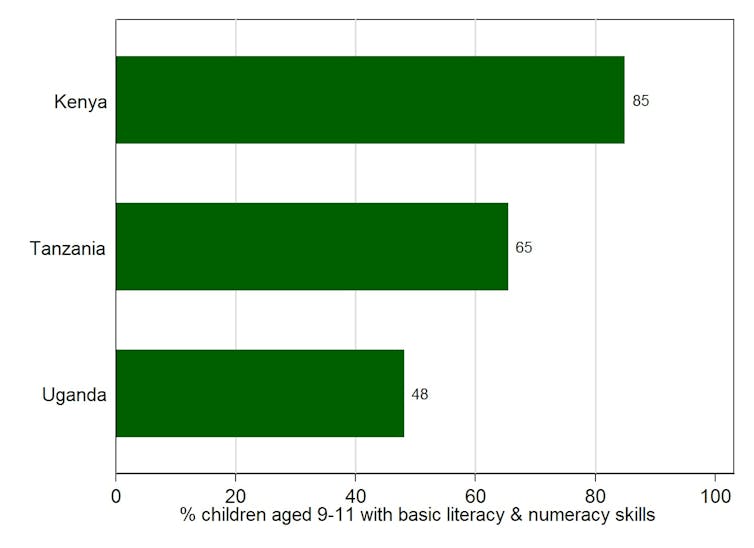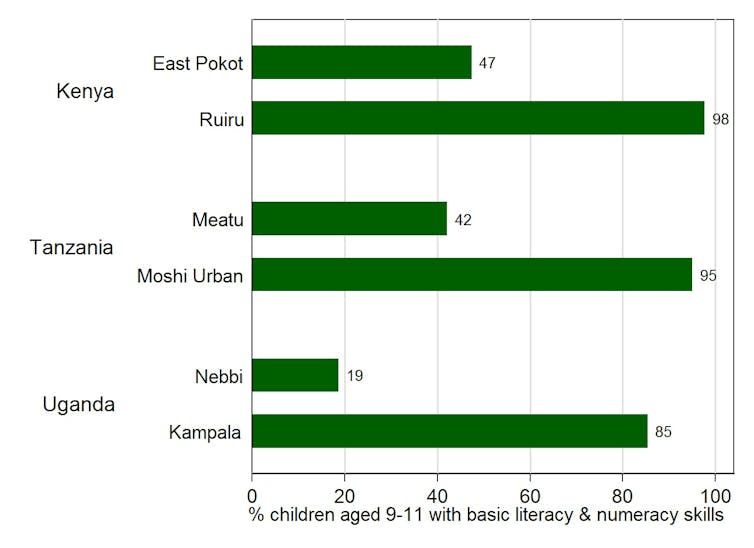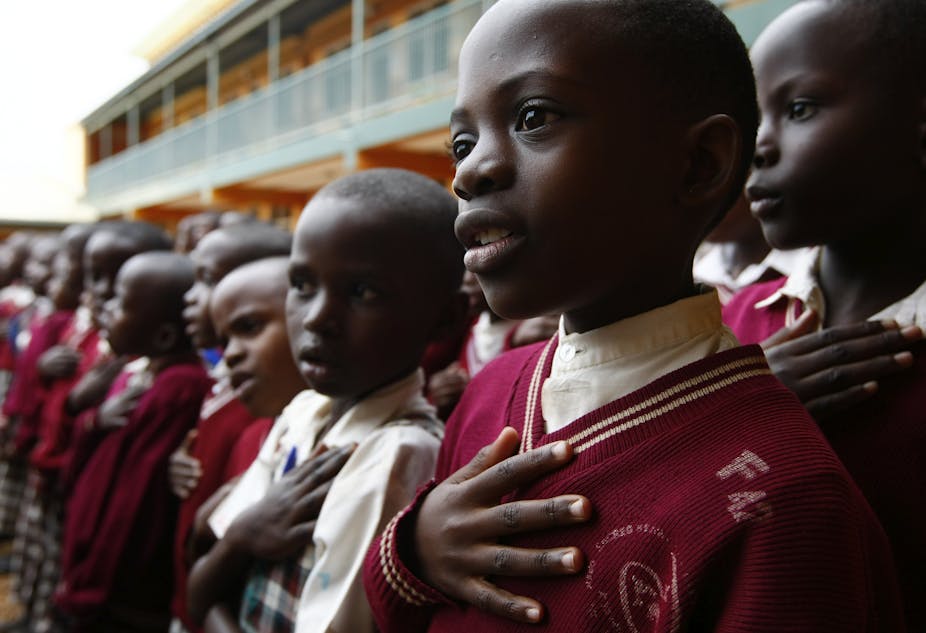Much has been written about the failings of primary education systems in East Africa. Teachers are often lambasted for being absent from school, for being poorly motivated, and even for lacking basic knowledge about the subjects they teach. It’s not all bad: genuine successes have been registered in improving enrolment rates. But this does not appear to be enough. Even when they attend school, children don’t seem to learn very much.
Faced with these challenges, national governments and foreign aid donors regularly call for deep reforms to schooling systems to improve the quality of learning. For instance, the UK’s Department of International Development recently allocated £21 million on research to “build an understanding of education systems and how they can be transformed to accelerate learning”.
But are these concerns supported by the facts?
Delving into the data
On the face of it, the answer is “yes”. An initiative called Uwezo is trying to improve literacy and numeracy rates among children aged six to 16 in Kenya, Tanzania and Uganda. Data collected by Uwezo since 2009 in these countries shows a somewhat depressing combination of high rates of enrolment, but low rates of learning.
These tendencies are illustrated in Figures 1 and 2. The first figure reflects the share of children aged 9-11 in each of the three countries who report that they are attending school. We can see that in all three cases, more than 90% of children are enrolled. This is a vast improvement. Kenya, for instance, almost halved the number of children out of school between 1999 and 2010.
Figure 1: Enrolment rates, by country

Figure 2 shows the share of children aged 9-11 able to both read simple words and discern which of two numbers is larger than another for numbers of up to two digits. These are skills that should be mastered in the first few years of school – preferably, in first grade. In all countries there is a learning gap. Large numbers of children are enrolled in schools, but very few of them have these basic skills. And these results are not accounted for by older children in first grade. Other measures of learning quality also point to significant concerns. For instance, less than half of all children aged 9-11 in the region are able to pass basic literacy and numeracy tests at the Standard 2 level.
Figure 2: Basic literacy and numeracy skills, by country

Behind the average
Aggregate evidence of this kind appears to substantiate both the shift of focus to learning, as well as the need for significant, large-scale reforms. Learning quality does need to be improved across the board. But jumping from these big facts to policy recommendations is never simple. Moreover, a focus on averages can be very misleading. The distribution of outcomes must be examined.
Indeed, an immediate issue jumps out from Figure 2: there is a large difference in average results between the three countries. Although the Uwezo tests are not perfectly comparable, the evidence is strong that children in Uganda generally perform less well than children from Kenya.
Even more importantly, there are pockets of both success and failure within each country. School systems are not homogeneous things. The challenges facing government schools in the remote arid regions of Northern Kenya are materially different to those facing schools in the upmarket Westlands suburb of Nairobi. In fact, the gap in learning outcomes between the best and worst districts in each country is enormous. This is illustrated in Figure 3, again using the same metric of very basic literacy and numeracy skills.
Figure 3: Basic literacy and numeracy skills, by best and worst district in each country

An alternative agenda
A closer look at the data reveals that differences in learning outcomes between regions within each country are huge. Some children are doing well, but many are being left behind. And when we reflect on the distribution of learning outcomes, it is not evident that system-wide reforms should be the priority. More effort is required to resolve failing schools and even failing regions. This means learning about what is working, not just moaning about low national averages. A greater focus on the most disadvantaged also might be the right thing to do.

